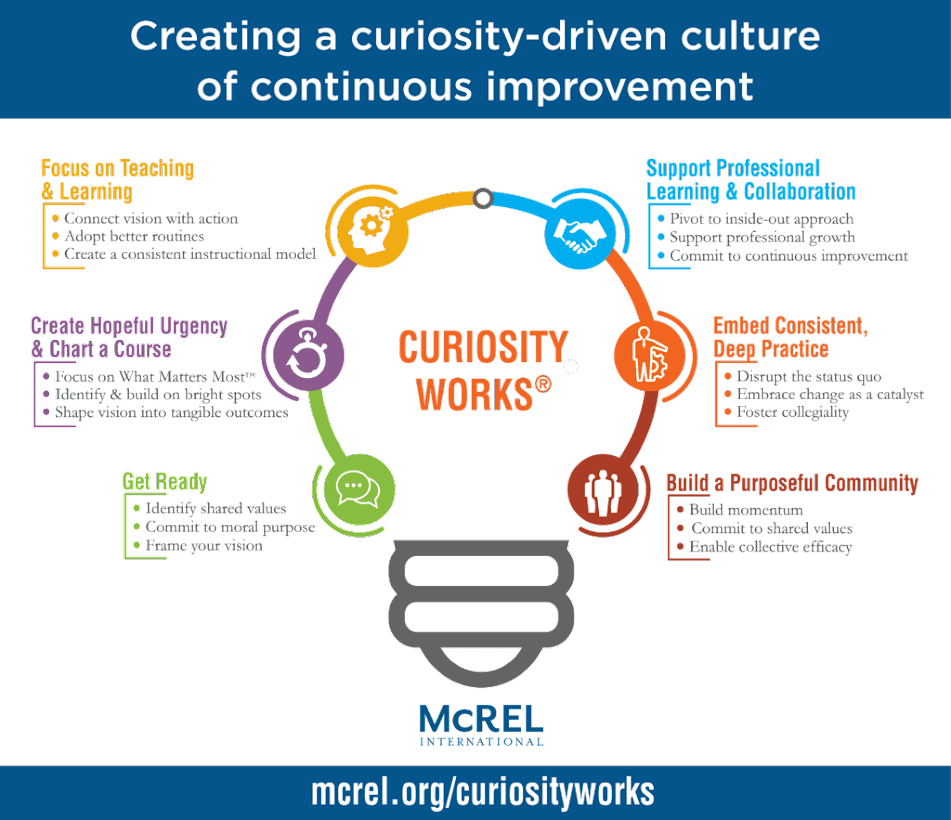If you have a penchant for exploring a topic, delving into it feels like an exciting journey. Nonetheless, students and institutions frequently overlook this innate human inclination to actively seek and assimilate novel information. Educational specialist Stefaan van Hooydonk is dedicated to altering this mindset. Within this abstract, he presents a brief and clear manual on fostering constructive inquisitiveness among professionals.
- Suggestion
- Key Points
- Synopsis
- Embrace a Curious Mindset
- An Inquisitive Attitude for Dynamic Environments
- The Advantages of Curiosity for You and Your Organization
- Empowering Leaders Through Curiosity
- Curious groups foster a secure space for their members’ curiosity.
- For corporations, curiosity bolsters organizational adaptability, innovation, and enhanced receptivity.
- Corporate strategies that prioritize curiosity facilitate both pioneering exploration and streamlined implementation.
- Curiosity drives revolutionary and gradual innovations.
- To foster curiosity in your organization, adopt 10 strategies.
- About the author
Suggestion
Inquisitiveness is an asset in the business world. Learning expert Stefaan van Hooydonk provides a brief and clear manual on nurturing productive inquisitiveness among professionals, within teams and organizations. The value of inquisitiveness in business is widely recognized, but the author references recent studies, alongside illustrative instances and anecdotes from his tenure as chief learning officer at Flipkart, Cognizant, and other firms. While his enthusiasm may lead to some repetition, van Hooydonk delivers a distinct, beneficial overview and valuable suggestions.
![[Book Summary] The Workplace Curiosity Manifesto: How Curiosity Helps Individuals and Workspaces Thrive in Transformational Times](/wp-content/uploads/2024/04/d1d8d236e3e16418e290bbbaba4d2305.jpg)
Key Points
- Foster a spirit of curiosity.
- A climate of change and uncertainty necessitates an inquisitive attitude.
- Curiosity is advantageous for both you and your organization.
- Inquisitive leaders achieve superior results and foster employee curiosity.
- Inquisitive teams create a secure space for the curiosity of their members.
- For companies, inquisitiveness bolsters organizational adaptability, innovation, and enhanced listening.
- Corporate strategies that prioritize curiosity facilitate both innovative exploration and effective implementation.
- Inquisitiveness propels disruptive and progressive innovation.
- To enhance inquisitiveness in your organization, adopt 10 strategies.
Synopsis
Embrace a Curious Mindset
Curious individuals have an insatiable desire for knowledge. Curiosity involves being ready to challenge established norms, embark on exploration and revelation, and acquire wisdom. Curiosity is often associated with childlike attributes, yet studies reveal that both children and adults harbor similar levels of curiosity. The variance lies in children’s enhanced readiness to take risks and endure discomfort to pursue knowledge.

Curiosity is sparked when encountering something new and recognizing it as such. A prompt evaluation of one’s capacity to delve deeper into the subject without risking oneself follows suit. If there is the assurance of exploring the matter without apprehension, the action inspired by curiosity ensues.
“I possess no special talents; I am only passionately curious.” (Albert Einstein)
Curiosity is piqued when individuals possess some prior knowledge of a subject. A bit of information triggers curiosity, and further learning fuels its expansion. Once individuals believe they have exhausted the subject matter, their curiosity diminishes. Monotony, routine, and stress also stifle curiosity.
Each person harbors an inherent curiosity, with some displaying more than others; curiosity also appears to have a genetic element. Encouragingly, individuals can cultivate their curiosity, particularly within a conducive setting.
An Inquisitive Attitude for Dynamic Environments
In the previously stable business landscape, organizations excelled by prioritizing operational efficiency. During such times, leaders cherished continuity, certainty, and predictability, succeeding by leveraging established advantages. In today’s era of rapid transformations, companies clinging to outdated business models and the status quo will face stagnation.
“Replacing fear with curiosity opens endless possibilities.” (Philosopher Alan Watts)
A constantly evolving world necessitates curiosity, agility, exploration, and innovation. Fostering empowerment and autonomy among employees can benefit organizations in this scenario. Today’s leaders must adopt open-mindedness and actively seek fresh opportunities. Planning and control mechanisms must give way to innovation pathways. This approach demands curiosity, alongside the agility and risk acceptance it nurtures.
The Advantages of Curiosity for You and Your Organization
Individuals reap the rewards of inquisitiveness as it heightens their involvement, drive, and satisfaction. This progression enables quicker career advancement, improved interpersonal connections, an openness to novel experiences, and reduced apprehension in the face of change.
Curiosity enhances individuals’ readiness to harness their intellect and knowledge to better themselves, their relationships, and their undertakings. It aids in creating novel blends of concepts and discovering solutions to previously elusive problems. Inquisitive professionals develop extensive expertise, transforming into “T‑shaped” employees capable of excelling in roles demanding cognitive challenges and in-depth knowledge.
When inquisitive individuals lack essential details, they acknowledge the need to acquire them, exhibiting humility. Curiosity primes the brain to receive information, enhancing the ease of learning for the curious. They can tap into superior memory functions compared to those lacking curiosity.
“Curiosity involves venturing into new territories, acquiring fresh knowledge, nudging the boundaries of comfort, and introducing variety.”
Conversely, conformity, the antithesis of curiosity, compel individuals to cling to what is known, refrain from making errors, and seek approval from the majority. The desire for stability and predictability emanating from an individual’s culture, society, and intrinsic makeup drives conformity. This hinders individuals from exploring new avenues, posing queries, and venturing beyond their comfort zones. Curiosity serves as an antidote to the stifling impact of conformity.
Empowering Leaders Through Curiosity
Curiosity empowers leaders to make logical, deliberate decisions, adapt adeptly to uncertainty, and contemplate fresh strategies. They can communicate mindfully, being fully attentive. Curious leaders exhibit a readiness to accept feedback on their performance, showcasing assured humility by seeking assistance and acknowledging their limitations.
Curious leaders serve as exemplars. A team leader’s dedication to learning encourages team members to embody this trait. When leaders exhibit curiosity, employees perceive that the corporate culture espouses and nurtures their inquisitiveness. Leaders must undertake specific measures to demonstrate that the organization welcomes inquisitiveness, both in inquiries and in the pursuit of expanding knowledge and capabilities.
“While leaders express admiration for curious minds, they inadvertently stifle curiosity, fearing it will amplify risk and inefficiency.” (Organizational psychologist Francesca Gino)
Many leaders succumb to the pitfalls of leadership…out-of-date attitudes that hinder them from embracing inquisitiveness. These encompass the notion that curiosity slows down productivity and hampers concentration. Alternatively, they might believe that inquisitive employees will be disorderly and challenging to oversee. They might prefer centralized decision-making and adhere to the idea that leaders should have all the answers and consistently exhibit authority. When authoritarian leaders discourage their team members from challenging their decisions or suggesting alternatives, they suppress curiosity. Leaders who favor established solutions also restrain employees’ curiosity. They typically allocate minimal time for their team members to explore innovative options – to the organization’s disservice.
Curious groups foster a secure space for their members’ curiosity.
Curiosity enhances a group’s efficiency, cooperation, and communication. Curious teams experience reduced conflicts and a more respectful ambiance. Members of curious teams encounter higher involvement, contentment, and dedication. Curious teams often make sound decisions as they mitigate groupthink.
Steering a curious team entails more than just gathering team members who showcase curiosity. It involves establishing a team that cultivates a culture, ambiance, procedures, and customs to form an atmosphere conducive to curiosity. In the milieu of a curious team, members feel secure, valued, supported, and at liberty to voice their thoughts and investigate.
“Curiosity and innovation go hand in hand, with curiosity being in the driver’s seat.”
Explorations into curiosity, organizational performance, and team performance pinpoint nine facets of curious teams: The manager’s approach and rapport with the team, the team’s learning ethos, its diversity, its rituals and systems, its attitude towards openness, the psychological security it nurtures, the role models it offers, its vision clarity, and its penchant for innovation. Executives should promote curiosity at the team level where employees will experience its advantages most intensely.
For corporations, curiosity bolsters organizational adaptability, innovation, and enhanced receptivity.
Curiosity can amplify organizations’ capability to anticipate future trends. It can enhance their ability to heed their customers, workforce, and markets. Furthermore, it can elevate their competitiveness, efficiency, and involvement. Curious organizations usually benefit from positive customer brand perceptions.
The companies that thrived during the upheavals of the pandemic devised innovative strategies to cope with emergencies and fluid circumstances. Possessing the traits of curious organizations proved beneficial, as they were open to change, exhibited humility, and retained a fascination with potential future scenarios. Curiosity facilitates organizational learning, feedback mechanisms, and the capacity to learn from errors. In curious organizations, individuals feel confident expressing divergent viewpoints and challenging the status quo. Curious organizations generally attract top talent and then offer an environment where talented individuals can flourish.
“Curiosity is a growth mindset in action.” (curiosity researcher Alison Horstmeyer)
Curious organizations undertake two actions that uncurious organizations do not or cannot: They construct an environment that supports curiosity, and they nurture a curious outlook among their employees, leaders, and teams. They exhibit diversity among individuals and in viewpoints and experiences. Startup ventures tend to exhibit abundant curiosity, but organizations of any size can foster a culture that encourages curiosity. Most organizations already possess that groundwork.
Corporate strategies that prioritize curiosity facilitate both pioneering exploration and streamlined implementation.
Pioneering organizations such as Microsoft, Novartis, 3M, and Google – among numerous others – have embraced curiosity as a facet of their strategy. In a volatile business milieu, organizations must strike a balance between exploitation – which entails efficient execution – and exploration, including experimentation and innovation. While concurrently employing exploitation and exploration poses challenges, executives with a curious disposition can amplify and gain from both strategic methodologies.
“The mental models that got us this far will not be the ones taking us into the future.”
Kodak’s downfall exemplifies how an uncurious organization can falter in recognizing and responding to market shifts, resulting in disastrous outcomes. Microsoft’s narrative showcases the ramifications of both curiosity and incuriosity: In 2000, Steve Ballmer assumed leadership of an entrepreneurial organization experiencing remarkable success. He enforced an assertive, conformist leadership style, leading to a decline in Microsoft’s market value. However, when Satya Nadella assumed the role of CEO in 2014, he focused on culture and fostering curiosity and a growth mindset. This approach engendered an extraordinary transformation.
Curiosity drives revolutionary and gradual innovations.
Innovations in any sphere – whether in business models, cultures, products, or processes – hinge on challenging the existing norms and posing fresh inquiries. Companies can pursue two distinct paths to innovation, either by venturing beyond the core business or focusing within it. Innovations stemming from external facets of the organization’s operations generally instigate disruption. On the contrary, innovations emerging within the core business typically yield evolutionary changes, though they can also be disruptive. Both avenues rely on curiosity. Focused curiosity, which centers around an existing domain of expertise, leads to incremental innovation. Meanwhile, broad curiosity, and exploring new territories, can yield radical innovations.
“All life is an experiment.” (philosopher Ralph Waldo Emerson)
An organization’s inclination towards innovation hinges on three variables: Firstly, whether the organization leans towards a hierarchical, family-centric, market-oriented, or ad hoc (such as start-ups) structure, and whether it encourages or stifles curiosity. Hierarchical and family-based enterprises tend to reward conformity. Secondly, the leaders’ inclination towards posing open-ended or closed questions influences the impetus for innovation. As per Yury Boshyk, the founder of Global Executive Learning and Business Driven Action Learning, leaders at McDonnell Douglas revolutionized the company’s innovation approach by posing open-ended questions, yielding more insightful responses. Thirdly, whether the culture nurtures a predisposition for innovation, is probable unless leaders opt to swim against that tide.
To foster curiosity in your organization, adopt 10 strategies.
High achievers naturally possess an inclination toward curiosity. Individuals experiencing subpar performance aspire to be curious, but they might find that their curiosity dwindles under stress, routine, overconfidence, or due to the absence of role models and a curiosity-driven culture. The following strategies can heighten curiosity among individuals, teams, and organizations.
- Take curiosity seriously – Allocate time to cultivate it. If you oversee a team or organization, prioritize curiosity as a key agenda item.
- Transform curiosity into a project – Assess the baseline level of curiosity in your team or organization, set objectives and a roadmap, evaluate available resources, and establish a timeline for measurable enhancement.
- Foster self-awareness – Monitor your curiosity levels and how they fluctuate across diverse circumstances. Investigate your beliefs, values, and motivations concerning curiosity. Reduce stress levels. Heighten awareness of your leadership approach and practices about curiosity.
- Enhance transparency surrounding your curiosity – Evaluate the three facets of curiosity: Intellectual curiosity about the world, social/empathetic curiosity about others, and intrapersonal curiosity about oneself. Analyze your metrics and monitor them over time.
- Cultivate minor habits – Employ the technique advocated by Stanford University design lab founder B.J. Fogg to instill habits. Identify an anchor moment, a new behavior, and an immediate reward to make curiosity a routine.
- Integrate curiosity into your lifestyle and encourage others to do the same – Embrace serendipity and novelty. Introduce productive curiosity to others.
- Embrace continuous learning – Expanding your knowledge base fortifies your curiosity. Expose yourself to concepts that challenge your convictions and broaden your perspectives.
- Pose inquiries about mundane, trivial, or apparent matters – This practice fortifies your curiosity and propels you to question the status quo.
- Apply curiosity to your connections – Curiosity about the individuals in your life will enhance your relationships and expose you to diverse viewpoints.
- Recognize the value of setbacks – Failures and errors present valuable learning opportunities. Eliminate the term “mistakes” from your lexicon. Label them as surprises instead.
About the author
Stefaan van Hooydonk, formerly the chief learning officer for renowned companies such as Cognizant and Flipkart, established the Global Curiosity Institute. He also serves as the Dean and co-founder of the Earth Academy.


